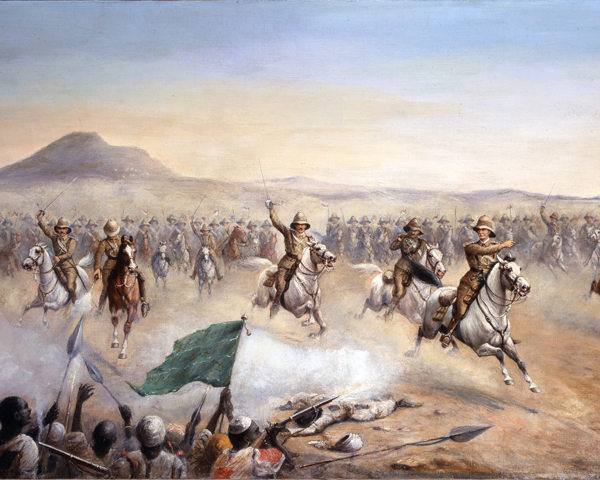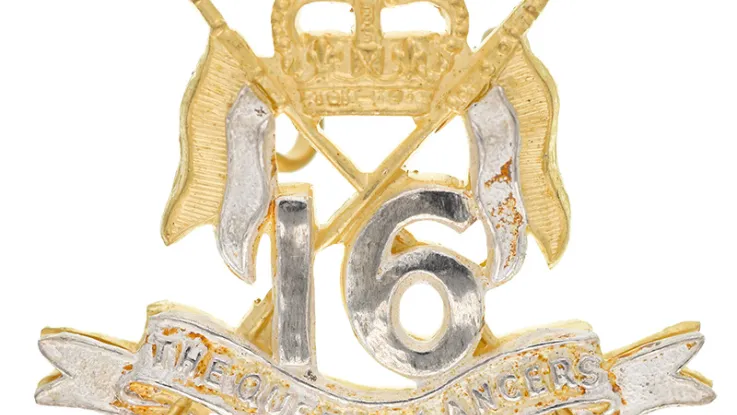Origins
In 1858, during the Indian Mutiny (1857-59), the 3rd Bengal European Light Cavalry was raised by the East India Company. With the loyalty of Indian cavalry soldiers in doubt, this new unit was entirely made up of Europeans.
Within a year, the British government had disbanded the Company and taken control of all its army units. Some of these formed the core of a new Indian Army. But the 3rd Bengal European Light Cavalry was transferred to the British Army and renamed the 21st Regiment of Hussars in 1862.
Three other light cavalry units with the number 21 had previously been raised and disbanded by the British Army. But this regiment had no direct link to any of them.
Deployments
It spent most of the next three decades in India and at home stations. Part of the unit also served with the Anglo-Egyptian camel force in the Sudan in 1884.
In 1897, the regiment was converted from hussars to lancers. A year later, it took part in the famous cavalry charge at the Battle of Omdurman during the Second Sudan War (1896-99). Its conduct there earned it the title ‘Empress of India's’. Winston Churchill - an officer with the 4th Hussars at the time - was also attached to the 21st Lancers during this battle.
First World War
Following a decade of home service, the regiment moved to Egypt in 1910, before returning to India two years later. It then spent the First World War (1914-18) stationed on the North West Frontier, winning it as a battle honour. Private Hull from the regiment won the Victoria Cross for his actions there in 1915.
In 1916, one squadron of the 21st was transferred to the Western Front for a year, serving with the cavalry of 14 Corps.
Legacy
After the war, the regiment was brought back to Britain. It was disbanded in 1921, but one squadron was reconstituted in 1922 and immediately amalgamated with the 17th Lancers (Duke of Cambridge’s) to form the 17th/21st Lancers.
Regimental museums
The National Army Museum works with a network of Regimental and Corps Museums across the UK to help preserve and share the history and traditions of the Army and its soldiers.
Discover more about the 21st (Empress of India’s) Lancers by visiting the Royal Lancers and Nottinghamshire Yeomanry Museum at Thoresby Park, Nottinghamshire.










